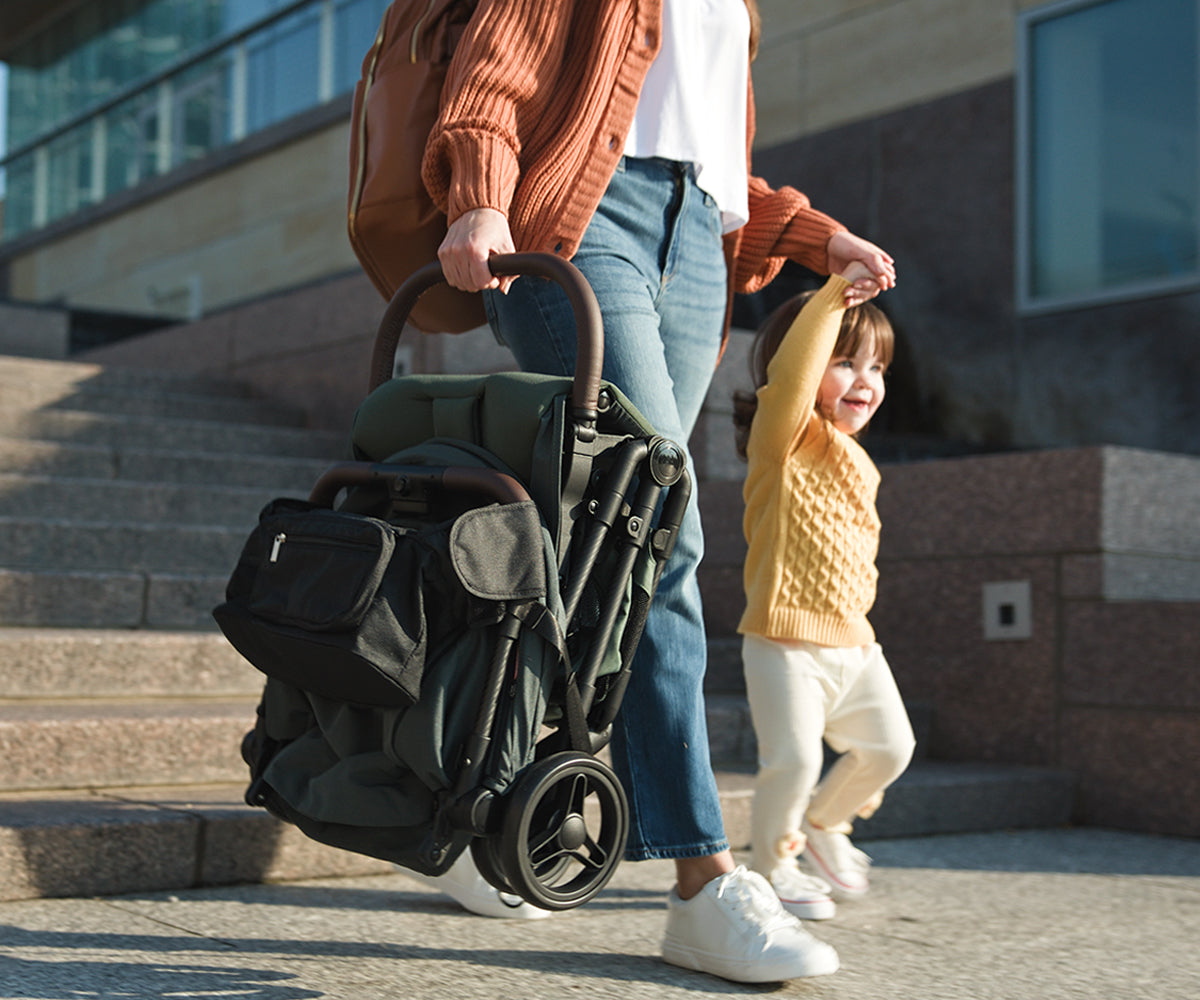
How to Create a Calm Sleeping Space for Your Baby
, by Artorias Tse, 9 min reading time

, by Artorias Tse, 9 min reading time
From infants to senior citizens, all need a peaceful place to sleep well. But babies have to sleep in a supportive, relaxing, soothing environment. Peaceful sleep is crucial for the overall growth and well-being of the little one.
Five Pillars of Sleep Hinderance Physical and mental growth require uninterrupted sleep, which can only be achieved with the right setting.
Styling the sleep sanctuary, with the right-use-the-room functional furniture, tuned ambience, and connecting mobility in the space.
You have a cushy nursery chair (often misspelled a nursering chair), a gentle glider, and a well thought out baby stroller. To harvest the most, you have to pay attention to every little detail.
Healthy Brain Development – Your brain is creating new connections and processing data while you sleep. Deep sleep promotes growth of needs of learning neuronal strength memory muscles and emotional regulation.
Supports Physical Development – Hormones are even released during sleep, the ones that are necessary for height, weight and muscle development. Sleep calms the bones, muscles, and immune system.
Emotional Regulation and Reduced Fussiness – Well-rested babies are more content, less cranky, and more social. Sleep deprivation can leave the little one screaming, hard to settle, and glaring with discomfort.
Healthy Sleep Patterns – A quiet, dark, and small space helps you establish a sleep routine. Good sleeping habit in babies lead to better sleeping habit when they become older.
No Sudden Infant Death Syndrome (SIDS) – A peaceful environment minimizes overstimulation which can trigger sleep injuries. SIDS: The good news is there are safe sleep practices that help reduce a baby's risk of SIDS.
Better Parent-Child Bonding – Parents also sleep better when their babies sleep soundly. It requires less stress and tiredness. The reason? A well-rested baby is much easier to comfort, feed, and soothe.
Comfortable Crib
It’s the number one piece of furniture in the nursery, since newborns spend most of their time sleeping. A firm mattress helps the spine grow the right way. Materials that are breathable allow air circulation to prevent overheating.
Soothing Lighting
Bright light can also overstimulate a baby, making it more difficult for him to go to sleep. Less lighting increases the release of melatonin, the sleep hormone. A for example shines enough light to see without waking the baby.

Temperature and Ventilation
Because babies cannot adjust their body temperature the same way adults can, they react to temperature changes. And overheating raises SIDS risk. Proper ventilation provides fresh airflow that prevents a stuffy environment, as well as a buildup of allergens.
Noise Reduction
And loud, sudden sounds can shock and disrupt. The lack of silence mimics the womb environment and helps newborn babies settle down. That a quiet nursery allows babies to sleep for longer and deeper.
Calming Colors and Decor
Calming Atmosphere through Soft and Neutral Colors It can be too confusing as colours can overstimulate the baby. A minimalist design promotes a calming space without distractions.
Functional Furniture
For this reason, a nursery should work for the baby and the parent. Having a comfy chair is even better of course, being able to feed and rock peacefully. Storage solutions can help keep essentials organized and easy to grab, helping to reduce some of the stress.
– Image of Functional Furniture Pieces in a Nursery –
Non-Toxic Materials
Babies have sensitive skin and immature immune systems. It leaves them vulnerable to allergens and irritants. The nursery is guaranteed to be non-toxic, healthy (by certified health standards)
Soft Textures
Soft textures accentuate the nursery, making it a cozy, warm environment that helps the newborn feel safe. A nursery that is cozy promotes relaxation, leading to better sleep.
Well-Planned Sleep Routine
A well-arranged nursery helps make your bedtime routine easier and more predictable. And not to mention, babies love consistency and familiarity.
Crib or Bassinet
Be sure to select one that was safety tested. The slats should be spaced no more than 2 3/8 inches apart. A firmer mattress will also help decrease the risk of Sudden Infant Death Syndrome (SIDS). To make climbing accidents hard, the height is adjustable and you can lower the mattress.
– Insert Image of a Sleepy Baby in Cradle in a Nursery –
Changing Table
An anti-tipping design makes this super-stable to avoid wobbling around during diaper changes. Guardrails and safety straps can ensure the baby doesn’t slip out. Look for a one with drawers or shelves to organize diapers, wipes and your baby’s clothes. Others double as dressers, and are thus more functional.
It falls perfectly wrapped with a comfortable padding that supports long feeding sessions with no discomfort. They help to proper posture with armrest and back rest And the nice rocking motion must help lull baby to sleep. Choose an easy-to-clean fabric to help avoid stains from messes.
Dresser or Storage Unit
Several compartments in a unit sort baby essentials. It should be tip resistant to avoid an unfortunate event. Go for child-friendly designs — no sharp corners or exposed screws. A multi-purpose dresser that serves as a changing table can be a space-saver.
Blackout Curtains
The thick, light-blocking fabric neutralizes sunlight and other outside lights. It opens and closes easily, so parents can modify lighting for naps. Opt for designs with muted or pastel colours for a soothing nursery.
Humidifier or Air Purifier
This silent function releases no noise to disturb the baby sleep. For maintenance, its filter-free or easy-to-clean design helps. And the adjustable settings allow for a custom humidity control.
Convertible and Dual-Purpose Furnishings
They compress to save space, adjusting to fit the baby’s evolving needs. Furniture undergoes less wear and tear, which means less frequent replacements. It will be a friendly environment and you get the best.
Lightweight and Portable Baby Gear
Intercity moving baby essentials become a piece of cake for them. Parents have flexibility for feeding, napping or playing anywhere in the home. It makes going on trips with the baby so easy!
Have a Moveable Feeding Station
Fed the baby with the most comfort, anywhere This clearly helps in keeping the environment a peaceful with no disturbances. It’s really nice for those middle-of-the-night feedings in a rigid sleep routine.
Set Up a Versatile Play Area
This kind of space allows for safe and active exploration. It also gives a comfortable space for playtime but makes moving from room to room convenient. You are also showing promise for early and steadier development in motor skills.
Establish a Mobile Sleep Routine
Create a regular schedule for naptime. Think about bringing along a favorite blanket, white noise machine or pacifier for continuity. Set up temperature and humidity controls for a sleeping environment.
Peaceful Parenting: A Flexible Routine
Adjusting to babyLearn how to BabyWhen you adjust to the needs of the baby, it would reduce the stress and make it easier for you to be a parent. Such arrangements help to keep the environment calm and organized. As a result, it promotes the bond between the parents and the baby.
Choose a quiet room (not one near the street or kitchen). Keep good air circulation and an adequate temperature. Or get a workspace that allows you to see daylight, but also can shut the curtains so you control the brightness.
Position the sleep zone (crib area) against a quiet interior wall, away from direct air vents, windows or heaters. For the changing station (diapering area), think of near the crib so it is easy to access for overnight changing.
Make sure you find a cozy and quite corner, a corner with soft Lighting are well suited for feeding and comfort (soothing). If you do, though, that's where the nursing, glider, rocking chair goes. Select the rocking or glider chair with armrests and back support.
There are likely different themes if you are to consider on what are the best colors for a peaceful nursery. Soft neutrals (beige, white, soft gray) create a soothing vibe. In the meantime pastel tones (light blue, minty green, lavender) do appear rather soothing to babies.
Adjust brightness with dimmable overhead light for daytime play vs nighttime calming. Gentle light for feeding and diaper changing -- nightlight or soft lamp Don’t forget blackout curtains to control natural light and sleep better.
Always ensure corner protectors cover every sharp edge. Tipping hazards: Secure furniture pieces to the wall to prevent it from tipping. And keep all types of cords and outlets out of reach. Do not hang heavy objects over and/or above the crib.
Opt for a firm, breathable mattress with a fitted crib sheet. Avoid leaving pillows, blankets, bumpers and stuffed toys in the crib. Keep crib slats at a distance that won’t entrap your baby. Ensure the crib is out of reach of any windows, curtains or hanging items. Regularly inspect the crib for loose screws or broken pieces.
Establish a calming and predictable sequence of activities such as – a warm bath, gentle massage, reading a book, soft lullabies or white noise. Bedtime routine is 30 – 45 minutes long. Sleep and wakeup times should always be consistent with limited flexibility.
Get blackout curtains to cover outside light. Use a soft nightlight to keep the nursery dimly lit during night feedings. (The same goes for bright overhead lights before bedtime.) Less screen time (TV, phone exposure) at least 1 hour before bed.
If baby is fussy, try gentle rocking, swaying or patting. Consider using white noise or soft lullabies to set a relaxing environment. Use a soft, breathable sleep sack rather than loose blankets. So the baby stirs at night, you do not pick him/her up right away. Give them a few minutes and see if they calm down themselves.
Launder crib linens and blankets weekly at a minimum. Dust furniture and vacuum frequently to eliminate allergens. Don’t use toxic or baby harmful cleaning products. Disinfect commonly touched surfaces, such as crib rails, toys and doorknobs.
With some planning and careful execution, creating a peaceful sleep environment is not challenging. Sensible purchases of furniture, judicious control and regular maintenance: all will suffice.
And a comfy nursing chair and a quality baby stroller all help in getting a good night’s sleep. So, share the guide with other parents and evaluate your existing nursery in the context of a tranquil setup.

YOUR FIRST ORDER